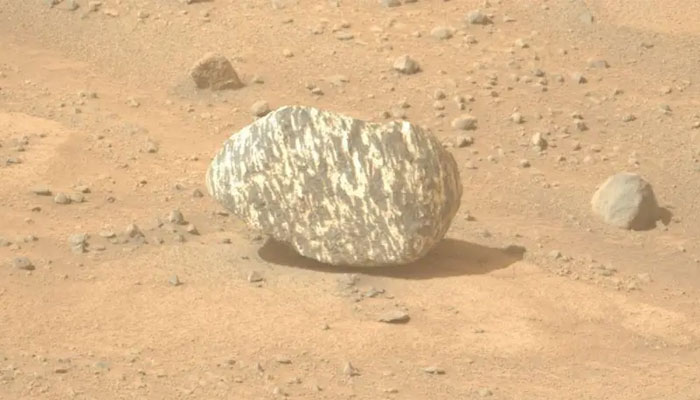Nasa's Perseverance rover spots unusually striped 'zebra' rock on Mars
Scientists await further insights from Nasa rover to investigate how "Freya Castle" ended up on Red Planet
September 26, 2024

The National Aeronautics and Space Administration's (Nasa) Perseverance rover has introduced human kind to some fascinating objects and views that it has discovered since landing on Mars's Jezero crater in February 2021.
However, scientists and researchers believe that the rover's latest discovery is most surprising one yet.
Last week, Nasa's Perseverance rover, which has been touring the surface of the Red Planet for ancient rocks, spotted a zebra-like black-and-white striped rock while driving across pebbly ground and it is unlike any other rock seen before on Mars.
According to researchers, the loose stone — which has been dubbed "Freya Castle" — is likely to have come from elsewhere on the planet, as it stands out from the surrounding bedrock.
The researchers believe the rock may have rolled downhill from a higher place and, as Perseverance is currently heading uphill, they await further insights from the rover in coming weeks in hopes to unravel the mystery behind its unique discovery.
The robotic explorer has been on the hunt for ancient rocks that could teach humans about the early history of the Red Planet.
Later, researchers found that the 'zebra' rock measures around 20 centimetres in length and has a distinct pattern with alternating black-and-white stripes.
Additionally, experts believe that Freya Castle has a unique texture that has not been previously observed in this part or any other part of Mars.
Although scientists haven't been able to solve the mystery behind the loose stone's unique stripes, they think that either igneous or metamorphic processes could be behind the patterns.
Rocks like Freya Castle provide valuable clues into the volcanic and metamorphic processes that shaped Mars billions of years ago.









